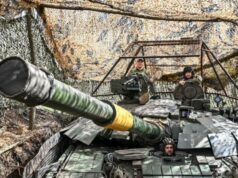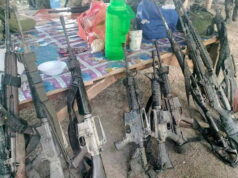By
Colonel Awadhesh Kumar, Special Forces
AWACS (airborne early-warning and control) aircraft are extremely critical in modern warfare because they have the ability to detect and track incoming fighters, cruise missiles and drones much before ground-based radars.
They also act as airborne controllers by directing own fighters during air combat with enemy aircrafts, and keep tabs on enemy’s entire aerial activities.
With two nuclear neighbours, we need to have a 24×7 coverage of the entire Indian airspace. For this IACCS (integrated air command and control system), the fully-automated air defence network with data links is being progressively built to integrate the wide array of military ground radars with each other as well as with civilian radars to plug surveillance gaps in Indian airspace.
Five IACCS nodes have already been established at Barnala, Wadsar, Aya Nagar , Jodhpur and Ambala. Under Phase-II of the IACCS, worth around Rs 8,000 crore, four new major nodes and 10 sub-nodes are now slated to come up.
While three nodes will be in eastern, central and southern India, the fourth is meant for the strategically-located Andaman and Nicobar Island archipelago.
However, even the most modern ground based Surveillance systems have certain limitations. So AWACS are the most crucial add on to remove such limitations.
The bare minimum AWACS for 24×7 coverage of the four Air Commands : the Western , South Western , Central and Eastern on the main land @ 3 each comes to 12.
However for proper coverage of J&K and along the Himalayan mountainous areas we need to add at least 6more. For coverage of the Southern Air Command we again need to have 6. Another 6 are required for Lakshadweep and A& N. Thus the total comes to 30.
For Out of area requirements, training , experiments and to cater for reserves another 6 may not be too excessive , ie total of 36 or two full Squadrons.
However instead of 36 AWACS , the IAF presently has just three Phalcon AWACS, with a 400-km range and 360-degree coverage. Then there are also two “Netra” AEW&C aircraft, fitted with indigenous 240-degree coverage radars with a 250-km range on three smaller Brazilian Embraer-145 jets.
In contrast Chinese PLAAF already has 30 AWACs and Pakistan has eight Chinese Karakoram Eagle ZDK-03 AWACS and Swedish Saab-2000 AEW&C, and is on course to get more from China.
We do have an indigenous AWACS-India project which was approved by the defence ministry in March 2015 for 360-degree coverage indigenous AESA (active electronically scanned array) radars to be mounted on two Airbus A-330 wide-body jets. But these two AWACS will be ready only by 2024-2025 at the earliest, with six more to be ordered at a later stage.
However things have to be speeded up. A decision needs to be taken to go for either A330 or the latest version of IL76. Place orders for five aircrafts and then carry out licence production of another 24 aircrafts for AWACS. The same aircraft should also be chosen for aerial refuelling and that means another 36 aircrafts.
Thus a total of 60 transporters will be a worthwhile investment. Another 36 aircrafts may be added to the total in case same aircraft is chosen as a heavy lifter for augmenting the existing fleet of C17 heavy lifters.



